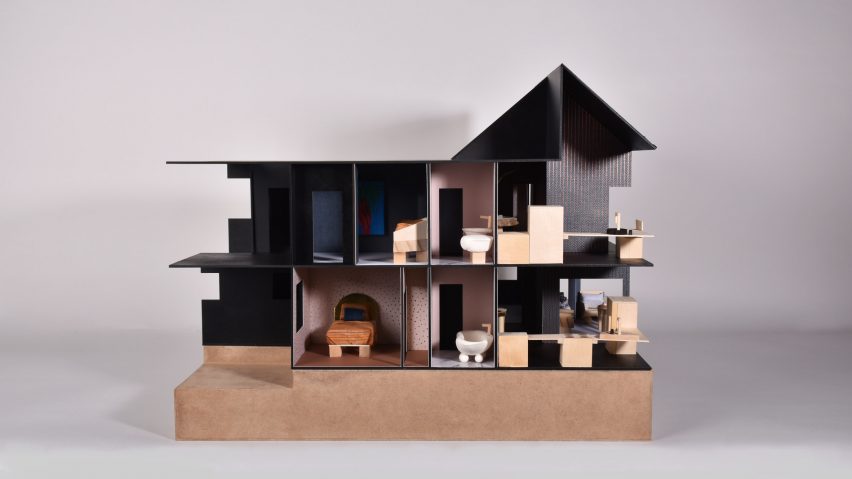
Ten design projects by students at the University of Colorado Denver
Dezeen School Shows: a project that spotlights mycelium as a building material is included in Dezeen's latest school show by students at University of Colorado Denver.
Also included is project that addresses the lack of affordable student housing in Denver, Colorado, and a mixed-use site that combines residential buildings with a community hub that reuses waste water to nourish crops.
University of Colorado Denver
Institution: University of Colorado Denver
School: College of Architecture and Planning
Course: Master of Architecture
Tutor: Marc Swackhamer
School statement:
"The College of Architecture and Planning at the University of Colorado Denver is the only college in Colorado offering comprehensive programs in the design and planning of the built environment from undergraduate through accredited professional master's degrees to a doctorate.
"We take an interdisciplinary approach to design. This can be seen and experienced through our curriculum, minor and dual degree offerings, certificate programmes and the projects and research of our faculty and students each semester.
"In a rapidly changing world where unprecedented challenges emerge with ever-increasing frequency, the education of an architect must remain adaptive.
"The CU Denver Department of Architecture fosters the capacity to ask bold questions, take risks, think independently and approach the work of architecture with curiosity.
"In doing so, we strive to be agile, flexible, visually adept thinkers and makers who contribute to addressing global challenges over a lifetime of active, inquisitive learning.
"The Department of Architecture at the University of Colorado Denver offers a Bachelor of Science in Architecture and a Master of Architecture."
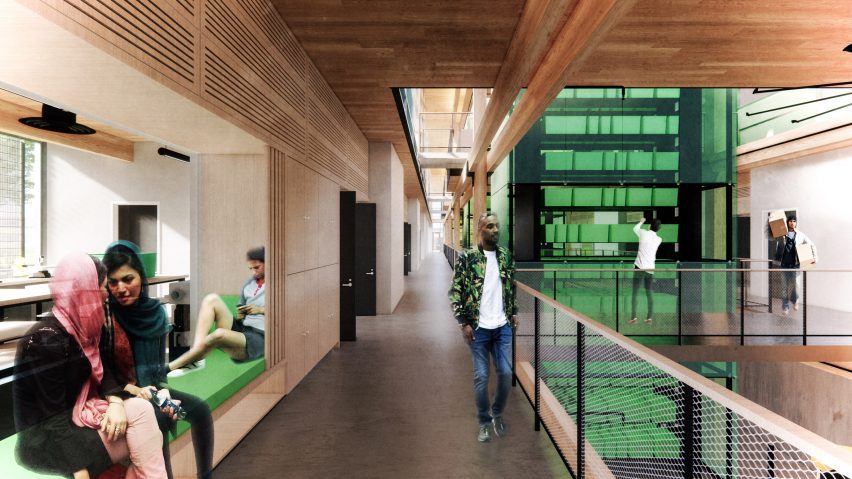
Denver Zero Waste Lab by Jacob Taswell and Peter Myller
"Denver Zero Waste Lab is a research foundation whose mission is to develop innovative responses to the human-made waste crisis.
"Seeking to repair a major rift in the neighbourhood fabric created by I-25 and the Colfax Avenue Viaduct, the foundation leverages the existing transportation network to bring in and transform local sources of waste material with input from community members, through a programme of research and education.
"While not capable of handling all of Denver's waste, the foundation will ultimately catalyse a circular economy that has the power to stitch together Denver's disconnected neighbourhoods, including Auraria, Lincoln Park, Sun Valley and Jefferson Park."
Students: Jacob Taswell and Peter Myller
Course: Graduate Design Studio VI
Tutor: Steven Dynia
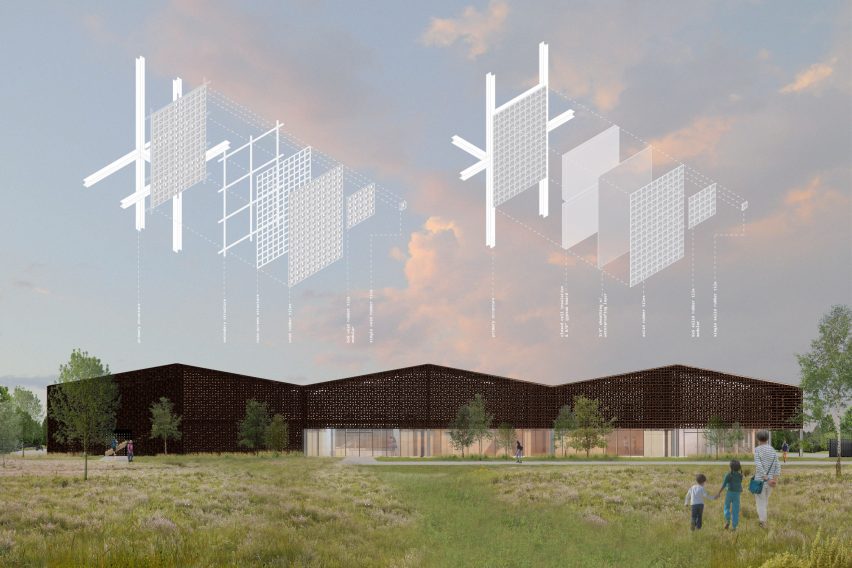
Clean-Tech Drive-Thru by Olivia Collier and Maslin Mellick
"Colorado is home to the nation's largest tire landfill site, currently holding 60 to 80 million tires just 40 miles north of Denver.
"Of these tires, only a small percentage are recycled for tire derived fuel, crumb rubber, landfill mediums, field mulch and other uses that are toxic to the environment.
"This project provides a new way of recycling tires through the design of a manufacturing process that minimises off-gassing and creates a new, innovative building material from society's waste.
"The Green-Tech Manufacturing Facility will house the tire recycling and manufacturing process of this building material, while also creating an educational experience for the public to learn about waste tire devastation, and how tires can be recycled and repurposed through architectural innovation."
Students: Olivia Collier and Maslin Mellick
Course: Graduate Design Studio VI
Tutor: Julee Herdt
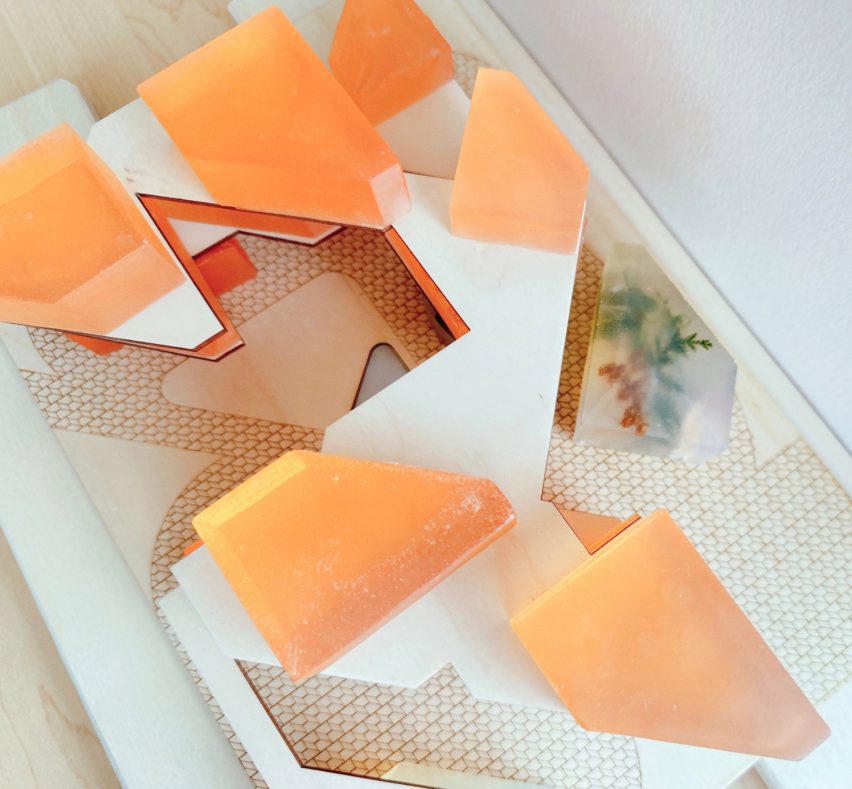
Modville by Stephanie Clouse, Sarah Donato and Martina Grbac
"Modville is a live-work housing project of eight residential units anchored around a central social hub – a laundromat that utilises a greywater system to sustain a plant shop and food crops grown on site as provisions for a corner cafe.
"The geometric logic of the site plan, module shape and aggregation of stacking units creates opportunities for personal and shared patios through organically formed shaded areas.
"Neighbours benefit from an alternative path through this city block and are encouraged to indulge in tasks like doing laundry, caring for houseplants, or grabbing a coffee, which are recontextualised and reaffirmed as vital and vibrant social activities."
Students: Stephanie Clouse, Sarah Donato and Martina Grbac
Course: Graduate Design Studio II
Tutor: José Ibarra and Leyuan Li
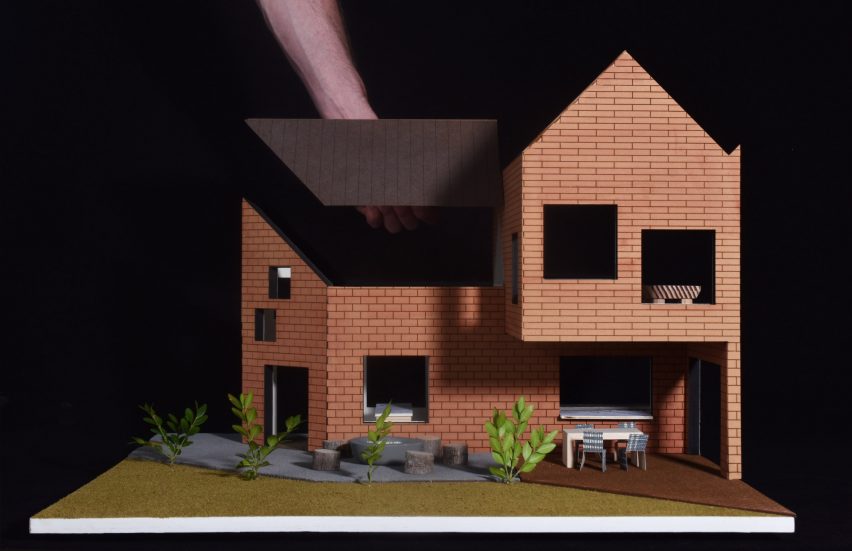
Multiplex Housing Project by Alex Gardiner and Theresa Khoury
"The Multiplex Housing Project was designed as a series of spaces that guide residents from fully public areas to increasingly private ones.
"Residents enter through a coffee shop and progress into a shared residential space.
"Residents have access to a large kitchen, a recreation room, work/study spaces and an outdoor area including a fire pit and a sprawling yard.
"Residents then continue to private units equipped with bathrooms, kitchens and laundry.
"As a contemporary approach to the 'house' and to reflect the language of surrounding buildings, the design of the complex features a quintessential gable and two different scales of brick that subtly differentiate the floors and engage with the materials used in the neighbourhood."
Students: Alex Gardiner and Theresa Khoury
Course: Graduate Design Studio II
Tutor: José Ibarra and Leyuan Li
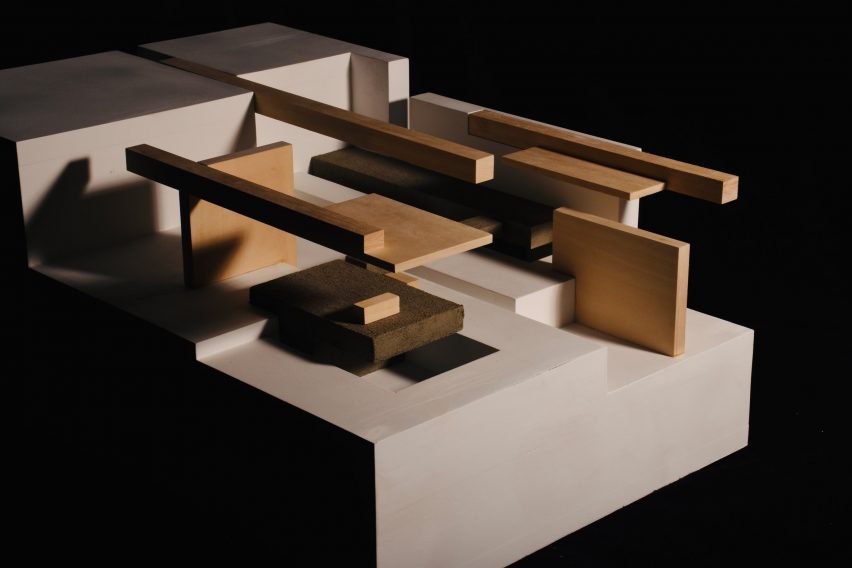
Creek by Blake Brooks
"Creek is a sculptural study exploring the interplay of distilled tectonic and stereotonic elements.
"The composition employs three distinct programmatic components: an entrance, transition and terminus, arranged to facilitate an introspective experience reflective of the ambiguous Colorado mountain landscape.
"The entrance initiates the experience, beginning with a panoramic view of the site and culminating in a framed view of imagined spaces beyond.
"The transition follows a narrow, cantilevered walkway, juxtaposing the seemingly floating path beneath with a monolithic gesture overhead and referencing the discrepancy between human and landscape scales.
"The terminus is an enclosed landing that provides a previously absent sense of intimacy and serves as a space for the user to contemplate their journey thus far."
Student: Blake Brooks
Course: Graduate Design Studio I
Tutor: Bernardo García Agrícola
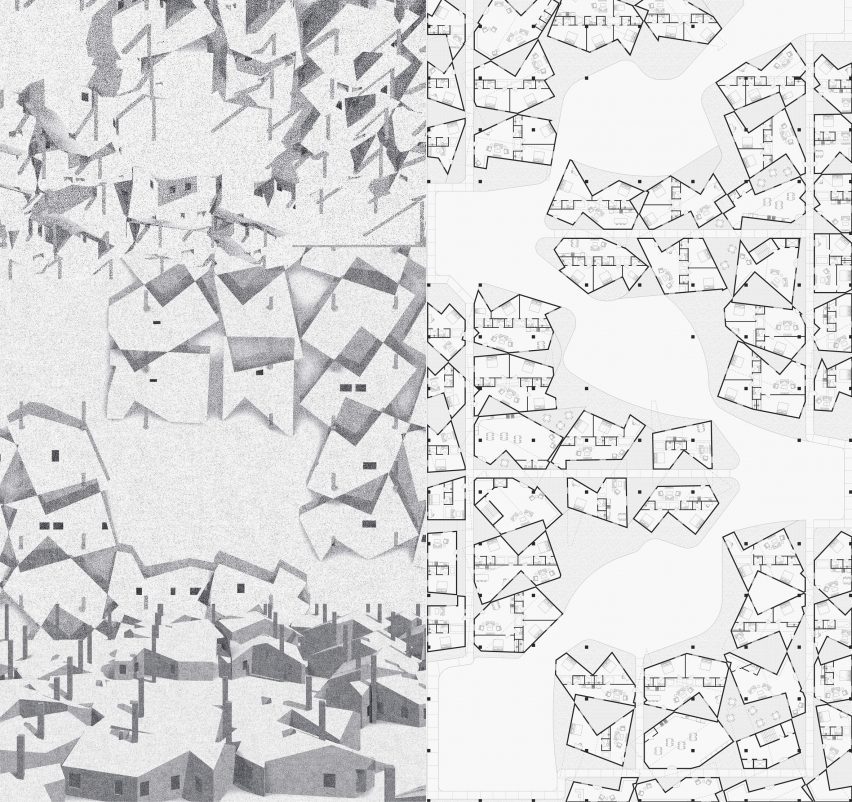
Leadville Co-Housing by Anna Baughman
"The proposed solution for this site is to create co-housing for these residents within the city limits of Leadville, which allows them to be more integrated with the overall community, as well as maintain their already established community amongst themselves.
"By integrating the seemingly random organisational strategies already existing within Leadville, each unit has a unique form that is created using the surrounding units.
"A variety of unit sizes ranging from 500 square feet to 1700 square feet create spaces that can accommodate numerous family sizes and needs.
"The weaving green space through the site creates smaller neighbourhoods of units that are centred around a shared common unit that houses laundry, kitchen and dining/lounge space."
Student: Anna Baughman
Course: Graduate Design Studio V
Tutor: Kevin Hirth

Learning from Leadville by Rob Cleary and Jonny Kaczor
"Between 1870 and 1890, Leadville, Colorado transformed from a small mining town to a bustling metropolitan city of round-the-clock activity that could rival modern-day Las Vegas.
"This project attempts to re-contextualise Robert Venturi, Denise Scott-Brown, and Steven Izenour's 'Learning from Las Vegas' to speculate on a future for Leadville that concludes in a world-class entertainment destination.
"This proposal offers a new type of monument for Leadville's infill blocks: a decorated duck that that challenges the lessons of Las Vegas's architecture of communication and Lynch's definition of elements of the city."
Students: Rob Cleary and Jonny Kaczor
Course: Graduate Design Studio V
Tutor: Kevin Hirth
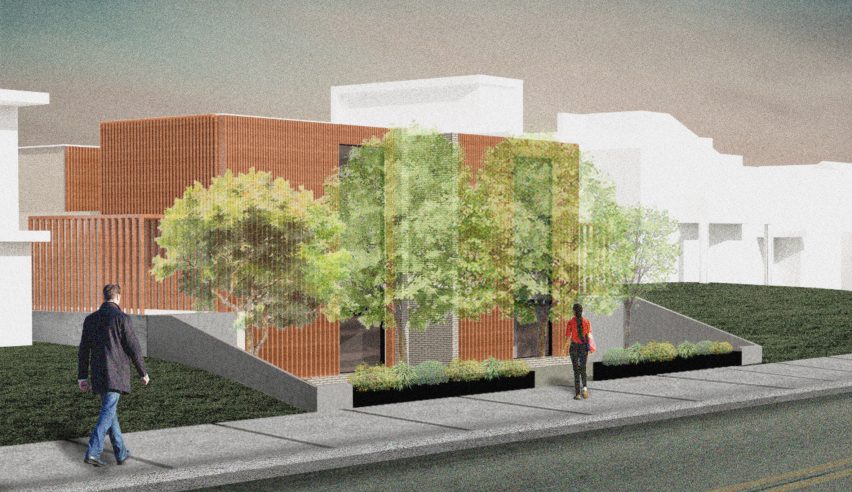
LowHigh by Neal van Tamelen
"This four home tandem house project looks to increase density within the neighbourhood without compromising the feel of the community.
"Each unique building has an open interior accompanied by high ceilings, large windows and easy access to the outdoors.
"The exterior is composed of blonde brick and extruded steel framed windows, carefully wrapped with cedar slats.
"LowHigh brings together both private and public spaces, weaving the front lawn into the middle courtyard, all tied together with private areas for each home."
Student: Neal van Tamelen
Course: Graduate Design Studio IV
Tutor: Liliya Djaniants
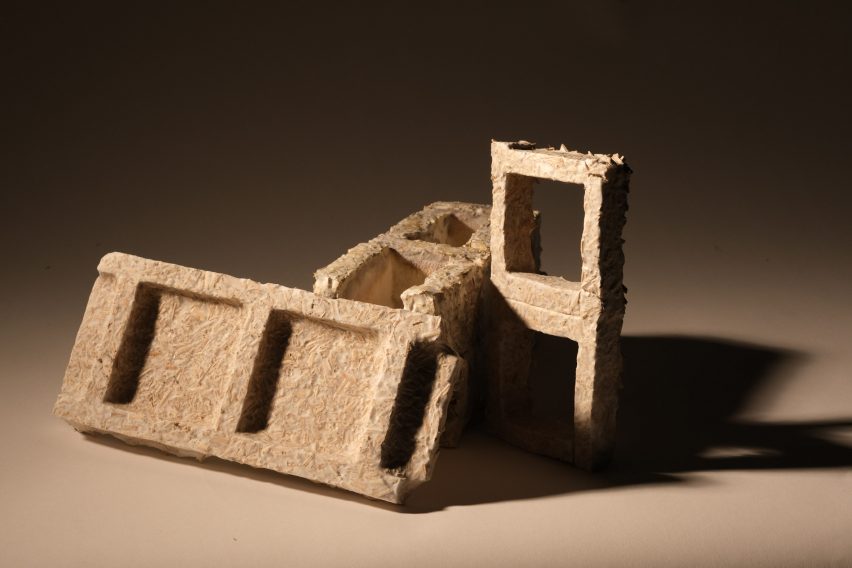
Group project: Mycelium Making: Creating Worlds in the Anthropocene
"The Mycelium Making: Creating Worlds in the Anthropocene studio explored the effects of instability and uncertainty on the individual and the collective psyche and proposed an environment for co-existence with nature and humans.
"By exploring the building potential of mycelium as a biodegradable structural material, students employed hands-on making using living materials and featuring individual and collective laboratory exercises to understand the material development process and mycelium's role in the making of structural form.
"Through this studio, students grew building components, utilised micro-welding to construct unit-based structures of living materials, experienced working in a laboratory to develop new types of material ecologies, and engaged in digital and manual fabrication."
Students: Mohammed Al-Jaber, Adam Dergosits, Jasmine Jones, Taylor Kortas, Kathryn Landers, Paola Larios, Brian McSweeney, Laurie Sheldon, Katie Tardif, Jacob Taswell and Antonio Valencia
Course: Graduate Design Studio V
Tutor: Assia Crawford
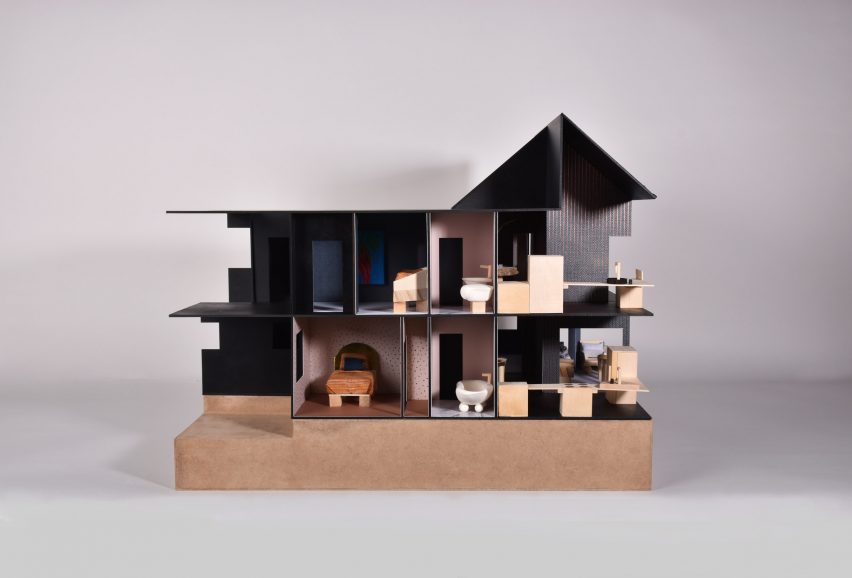
Collective Student Housing Project by Berenice Avina-Ibarra and Knisely Sautel
"Collective Student Housing Project is a response to the prevalent housing shortage crisis in Denver, Colorado, specifically as it impacts students.
"Centred around the concept of balance between collectiveness and individuality, this two-story residential project provides an abundance of options for private, semi-private and public spaces.
"Elevating the dormitory model that includes two traditional apartment units and offers a shared kitchen and dining space through a 'nested' design, residents are able to maintain their individuality and privacy with a personal bedroom and bathroom for each occupant, while also having the freedom to access communal indoor and outdoor areas."
Students: Berenice Avina-Ibarra and Knisely Sautel
Course: Graduate Design Studio II
Tutor: José Ibarra and Leyuan Li
Partnership content
This school show is a partnership between Dezeen and University of Colorado Denver. Find out more about Dezeen partnership content here.